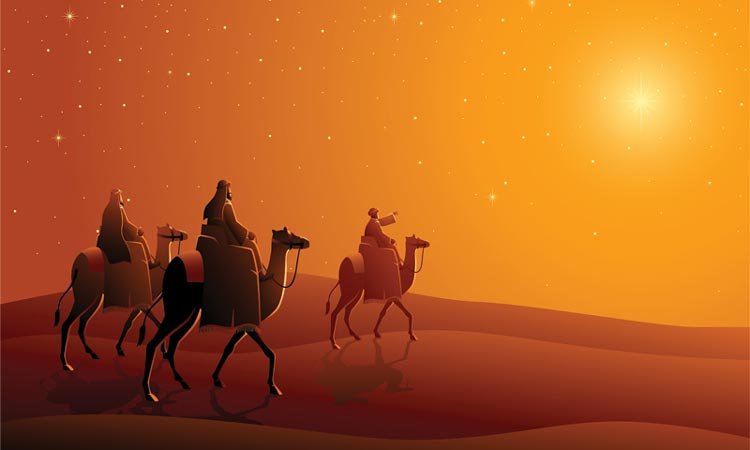One part of the Nativity story that has held particular fascination for me is the visit of the wise men, also known as the magi.
Matthew is the only Gospel that mentions these mysterious men, and he gives only scant details, simply calling them “wise men” and describing the gifts they brought: gold, frankincense and myrrh.1.
We’re told that they came from the East, which is a broad term. They could have come from as close as Mesopotamia, or from as far away as the lands that today are India or Central Asia. The common assumption is that they were from Persia, which was then part of the Parthian Empire, an implacable enemy of Rome.
About two years may have passed between the time the wise men first saw the star and the time they arrived in Jerusalem. We assume this to be the case because Herod learned from them when the star had appeared, and then in his effort to kill the “king of the Jews,” ordered the death of all the male infants in and around Bethlehem who were two years old or younger.
Would it have taken two years to travel from Persia to Jerusalem? A camel caravan traveling in a straight line would make the journey in about 25 days, so apparently they traveled rather slowly, or took a circuitous route, or it took considerable time before they set off on their journey. I suspect all three elements were in play, not to mention the need to cross a hostile border between empires that warred regularly.
The Persian magi had a reputation for studying the stars, but I wonder how they knew that the star they sighted signified that the “king of the Jews” had been born. Nowhere in the Hebrew Scriptures does it say that this special king would be heralded by a new star. Was there something in their own lore that said so? And why would the birth of a king in a small enemy kingdom somewhere to their west be so significant to them that they felt compelled to embark on a long, perilous journey to see him? What information were these wise men privy to?
Matthew tells us that they saw Mary and the child “in the house,”2 not in a stable as is commonly depicted. Luke also tells us that Mary and Joseph had been living normal lives since Jesus’ birth. When Jesus was eight days old, they had taken Him to be circumcised,3 and when He was 40 days old they had taken Him to the temple in Jerusalem to dedicate Him to God and to offer the customary ritual sacrifice for Mary’s cleansing after childbirth.4
And what about the star? It seems that every year I read about people poring over astronomical data from the time of Jesus’ birth, trying to locate a comet, supernova, or some other celestial event that could correspond to the Christmas star. I doubt they will ever find one, because this was unlike any other heavenly body—ever. Matthew tells us that the wise men had observed it from their vantage point in the east, and that they deciphered what it meant. But then they may not have seen it again until after they were on their way from Jerusalem to Bethlehem, which is little more than an hour’s camel ride away. As the wise men approached Bethlehem, the star reappeared and “came to rest over the place where Jesus was.” What kind of star suddenly appears and hovers over a house? I wonder if the star was not really a star at all.
Luke’s gospel tells us that a very bright light appeared in the sky the night Jesus was born.5 Could it be that this “multitude of the heavenly host” appearing in the night sky lit it up so brightly that the stargazing wise men mistook it for a stunning new celestial body? Luke says that after the heavenly choir finished singing to the shepherds they rose into the sky—and the wise men said they had seen the star rise. Could that have been the brightness that appeared over Joseph and Mary’s house? Why not? Angels seem to have been fairly regular visitors to this couple.6
And lastly there are the gifts. It’s because there are three gifts that the tradition has arisen that there were three men. But there could have been as few as two or as many as…well…many. Now, gold I understand, but why frankincense and myrrh? These two resinous substances were more expensive per weight than gold and were gathered from trees grown in, among other places, present-day Yemen.
The Jews used frankincense and myrrh in the blend of resins and herbs that they burned on the incense altar in the temple. That blend was so special to God that any Jew burning it in his home was to be exiled. There is indeed significance that incense used in the worship of God in the temple would have been offered by the worshipping wise men. I am not sure what Mary and Joseph could have used them for. Maybe they sold them in Egypt to cover their living expenses. They had to pay for their sojourn somehow.
So the wise men came, worshiped, and after being warned by God that Herod intended to have Jesus killed, returned to their country by a different route.
